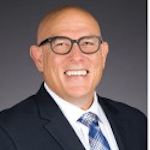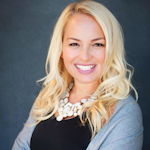It has been shown that about 50% of people snore,1 and about one in four patients seen in the dental office suffers from sleep-disordered breathing,2 a condition that can significantly impact overall health and quality of life. Therefore, focused dental sleep therapy diagnosis and treatment planning are vital components for a dental practice.
However, the number of dental sleep therapy treatments addressed specifically by dentists hasn’t grown. On average, dentists prescribe a mere one or two sleep therapy devices per year.3 Therefore, we want to examine the numbers to find out what is happening with the practice of dental sleep medicine.
Why is sleep apnea treatment difficult in a dental office?
Traditionally, there are four steps to treating sleep apnea in a dental office. There is a clear beginning and end, and a clear set of deliverables. The medical model of care within the dental practice takes time and training. For some, the financial reward is excellent. The steps are as follows:
• Identify the patient
• Qualify the patient
• Treat the patient
• Get paid for what you do
Identifying a patient who suffers from snoring and sleep apnea is not very difficult. A simple two-part query used to identify patients with sleep-disordered breathing starts with “Do you snore?” If the answer is yes, ask “Would you like to stop?” These questions can easily become part of the everyday patient screening process, undertaken at routine checkups and hygiene appointments.
Qualification of the patient who has been identified requires a sleep study administered by an accredited provider and reviewed by a board-certified sleep physician. The sleep study can be provided at home or in a sleep lab. Some states require that a physician order the sleep study, and some states allow the dentist to do this. In any case, there is a significant cost to a sleep study, not only in money but also in time.
Estimates for home sleep studies vary from $150 to $1,000, and the cost is often covered by most insurance companies. At-home studies can be booked in a few days, and the study can be returned to the provider and interpreted within a week or so.
In-lab sleep studies vary from $3,000 for a simple study to $5,000 for a split-night study that includes CPAP titration. It can take from three weeks to three months to book an in-lab study, and interpretation can take several days to two weeks. The cost is covered by most insurance companies.
Medical management of patients with sleep apnea is expected after the sleep study, and in most cases will involve CPAP, which will be initiated and titrated in the sleep lab as part of the sleep diagnostic protocol. Patients who suffer from simple snoring will not receive treatment, because snoring treatment is not a covered condition.
For the average dentist, treating the patient with a mandibular advancement device (MAD) is perhaps the easiest part. A set of upper and lower impressions and a comfortable protrusive bite should be sent to the dental lab. A MAD such as the Silent Nite Sleep Appliance (Glidewell Dental) can be fabricated and sent to the office within five days.
In the standard fee-for-service model, payment for these appliances is widely reported to be between $2,800 and $4,500. Medical billing is significantly more complicated. Often, dentists hire medical billing specialists to provide this billing service with the corresponding increase in revenue that goes with it.
Contrast the above practice in the medical model with the below process, which allows the treated dental patient to be referred to a physician for management of sleep apnea, if present. This method, which incorporates treatment with a provisional mandibular advancement device (PMAD), fits the workflow of the dental office.
Step 1: Patient identification and qualification for PMAD therapy
Patients are accustomed to receiving oral appliances such as nightguards in the dental office. If the patient is a candidate for sleep treatment, explain that a sleep appliance is essentially an upper and lower nightguard joined by hinges, straps, or other connectors that gently reposition the mandible forward to help open up the airway. It’s a subtle change that can have significant systemic health benefits.
Step 2: Informed consent and provisional treatment
Obstructive sleep apnea is a medical diagnosis that must be made by a physician or other suitably trained individual. From a medicolegal perspective, an informed consent document is required to confirm that patients are aware they are being treated provisionally, with the understanding that their condition entails medical risks for which they should consult with a physician.
Step 3: Reimbursement for PMAD
Dental insurance does not pay for sleep appliances. Medical insurance requires a different mindset and can be confusing. The simplest, surest way to ensure compensation is to charge the patient directly for the provisional appliance and related chairside services.
Summary
A significant number of patients need dental sleep therapy, and clinicians are able to provide immediate care. Dentists are responsible to patients in their practice, who view them as key providers in the extended health-care community. But these patients have come to expect treatment planning to begin on the day that they are screened. They do not expect to be referred outside the practice for medical diagnosis and management that can be impersonal, time-consuming, and expensive. Therefore, it is important that dental patients be screened and treated provisionally with informed consent before they are referred for medical management. This will maintain the locus of care in the dental practice and allow the dental practitioner to maintain the trusted relationship the patient expects. This is how dental sleep therapy will build practice value and help practices recover from the challenge COVID-19 has imposed on dentistry.
References
1. McKnight-Eily LR, Liu Y, Wheaton AG, et al. Unhealthy sleep-related behaviors—12 states, 2009. Centers for Disease Control and Prevention. Morb Mortal Wkly Rep. 2011;60(8):233-238.
2. Heinzer R, Vat S, Marques-Vidal P, et al. Prevalence of sleep-disordered breathing in the general population: the HypnoLaus study. Lancet Respir Med. 2015;3(4):310-318.
3. Information based on 25 years of making sleep devices for dentists at Glidewell
RANDY CLARE, Glidewell’s director of business development in dental sleep medicine, brings more than 25 years of experience in the sleep therapy and pulmonary function fields. He has held numerous management positions throughout his career and has demonstrated a unique perspective of alternate care diagnostic and therapy models. Clare is considered by many to be an expert in the use of oral appliances such as the Silent Nite Sleep Appliance to treat snoring and sleep apnea in the dental office.
LANA CLAY-MONAGHAN, MBS, MPH, MSHS, combines her background in digital entrepreneurship with a strong technical foundation in life sciences and management to lead business intelligence from a C-suite perspective. Clay-Monaghan has completed public policy and advocacy coursework at the Harvard T.H. Chan School of Public Health, and she earned her doctorate from the University of Southern California Rossier School of Education.








